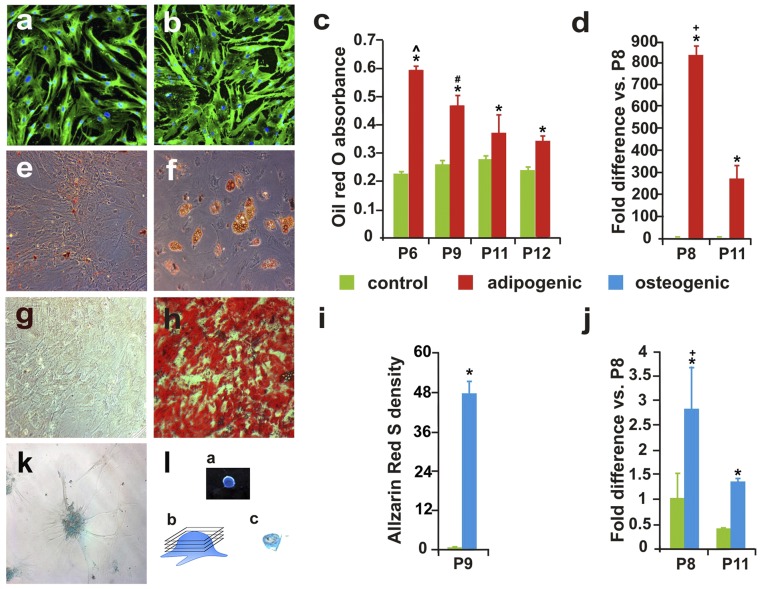Fig. S1.
hMSC quality control. (A and B) Immunostaining of MSC markers CD105 (A) and CD90 (B) for passage 12 (P12) hMSCs. (C) Oil Red O staining of adipogenic differentiation of P6–12 hMSCs (n = 6 per group; *, differentiation vs. control, P < 0.05, Student’s t test; ^, P6 vs. P9–12 and #, P9 vs. P11 and 12; P < 0.05, one-way ANOVA with Tukey’s post hoc test). (D) Real-time PCR showed mean expression levels of adiponectin (an adipogenic marker) in P8 and P11 hMSCs cultured in adipogenic or control medium (+, P8 vs. P11; statistical method per C). The real-time PCR finding was corroborated by Oil Red O staining of P12 and P6 hMSC-derived adipogenic cells shown in E and F, respectively. Alizarin Red S staining confirmed osteogenic capability of hMSCs. Whereas P9 hMSCs cultured in control condition showed no reactivity (G), the cells had high osteogenic yield after differentiation medium induction (H and I). Densitometric analysis of Alizarin Red S staining of P9 hMSCs cultured in osteogenic or control medium. Real-time PCR assay detected a significantly higher group mean level of ALP expression, an osteogenic marker, in P8 and P11 hMSCs cultured in osteogenic medium than in control culture and in P8 than in P11 hMSCs (J; statistical methods per C). Alcian Blue staining showed P9 cells with chondrogenic differentiation (K), and one of the intact chondrogenic pellets derived from hMSCs (L, a) that was cut (L, b) into 50-µm sections (L, c).

